Carbon nanotube products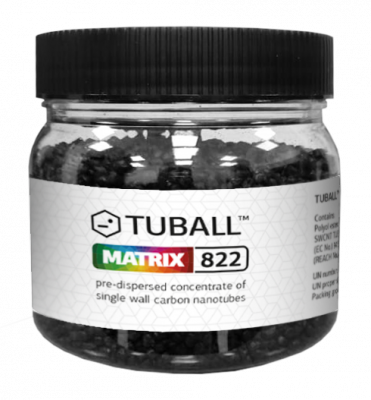


Confezionamento
Barattolo 0,4 l (fino a 100 g)
Altri tipi di confezionamento sono disponibili disponibile su richiesta del cliente
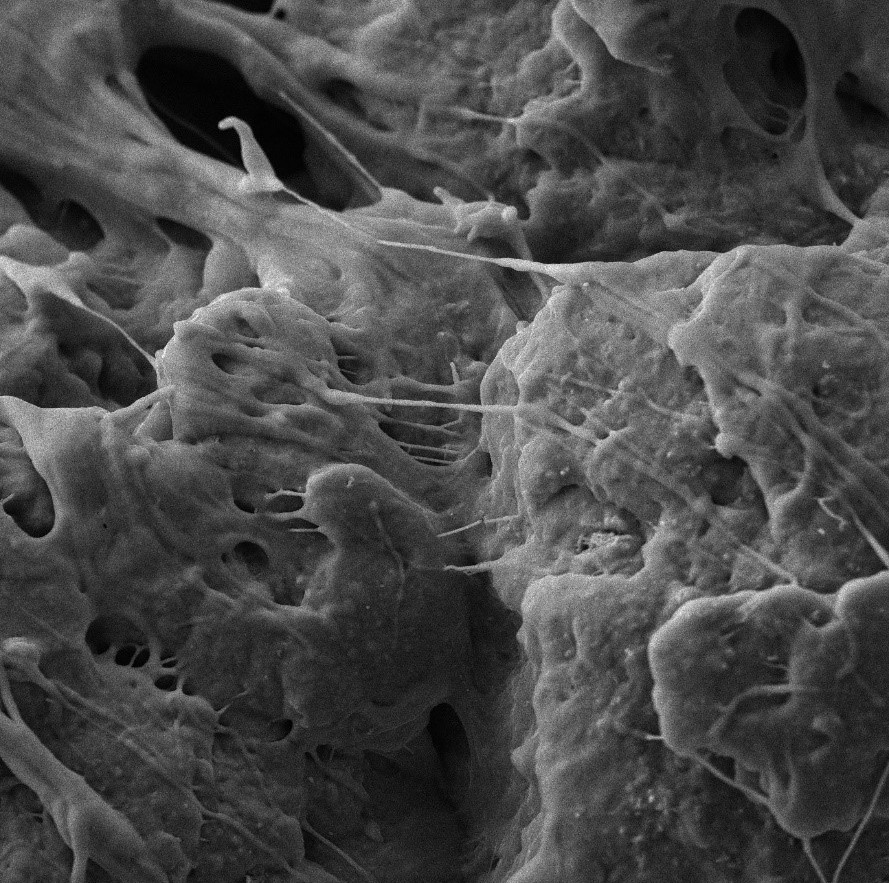
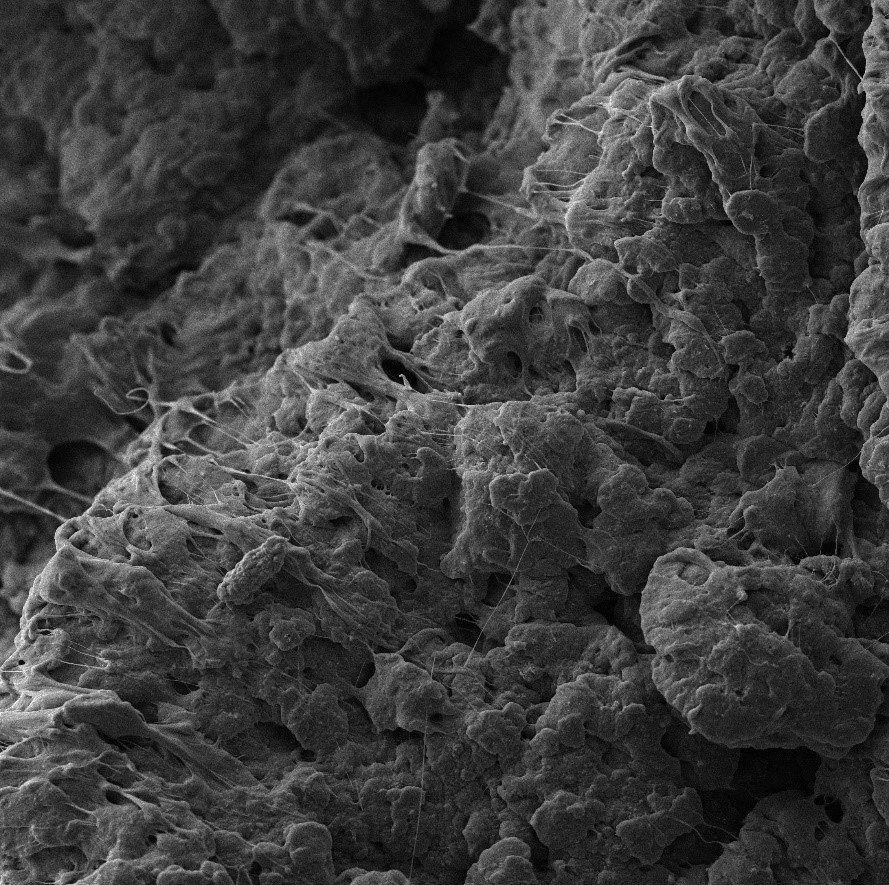
Additivo conduttivo universale a base di trasportatore in poliolestere per la produzione dei masterbatch a base di PP, TPU, PPS riempito, ABS, PC, PC-ABS, PA, GF PA.
I masterbatch risultanti possono essere utilizzati nelle miscele con polimeri riempiti e in combinazione con altri filler conduttivi per ridurre il loro contenuto e per ottenere migliori prestazioni meccaniche/ fluidità
Sistema materiale
Polipropilene, poliuretano termoplastico (TPU), polisolfuro di fenile caricato (PPS), acrilonitrile butadiene stirene (ABS), policarbonato, policarbonato ABS, poliammide (PA) e resina poliammidica rinforzata con fibra di vetro
Dosaggio di esercizio
0,2–2 % en peso
Supporti
Estere di poliolo
Formato
Pellets
Benefits
Conducibilità elettrica
Fornisce una conducibilità elettrica costante e uniforme ad una bassa concentrazione operativa
Proprietà meccaniche
Mantiene le prestazioni meccaniche chiave originali
Caratteristiche costanti
Mantiene la resistività indipendentemente dai livelli di umidità
Riduzione dello scarto
Contribuisce a ridurre il numero di prodotti non conformi
Esempi di applicazioni
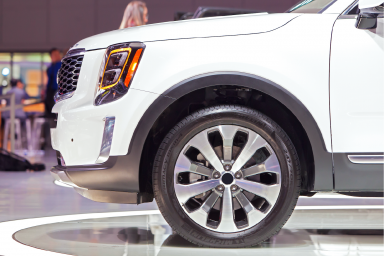
E-painting
сliccare per vedere i casi
Notizie
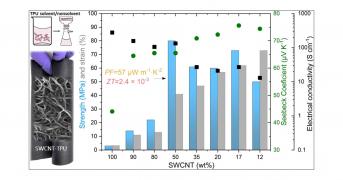
31 ottobre
[💡R&D] Easy-to-process flexible thermoelectric materials with robust mechanical properties were developed by researches from National Research Council Canada and Leibniz-Institut für Polymerforschung Dresden. TUBALL–TPU nanocomposite shows ∼7-, 25-, and 250-fold improvements in stiffness, strength, and tensile toughness, respectively. These easily processed, self-supporting, and stretchable materials can be utilized for energy-harvesting modules based on the thermoelectric effect.
Read the article in full here: https://pubs.acs.org/doi/full/10.1021/acsanm.3c03247
Learn more on graphene nanotube uses and applications: https://tuball.com/nanotubes-for?utm_source=facebook+&utm_medium=Post+campaign&utm_campaign=Oct+31%272023
#TEG #composites #TPU
Leggi su Facebook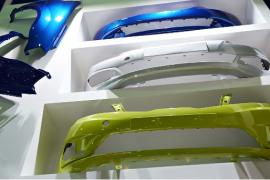
13 luglio
[🤔 #Didyouknow?] The first car bumper appeared in 1897 for aesthetic purposes. In 1901, it was redesigned to protect vehicle parts and ensure road safety. Initially made of rubber, most bumpers are now made of plastic. To achieve consistent color, manufacturers prefer to use electrostatic painting for both metallic and plastic parts. To do this, first a conductive primer should be applied on plastic parts to enhance the adhesion of the paint. Graphene nanotubes enable the production of light-gray conductive primers with high transfer efficiency for use in e-painting. This leads to cost optimization and reduced basecoat consumption compared to black primers.
Learn more on graphene nanotubes for automotive primers: https://tuball.com/nanotubes-for/conductive-primers?utm_source=Facebook&utm_medium=Post&utm_campaign=Did+you+know+Primer+July+23
#ElectrostaticPainting #Nanotubes #CarBumper
Leggi su Facebook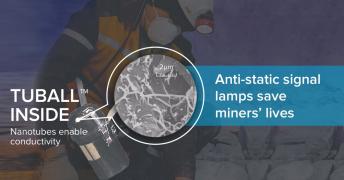
5 luglio
A signal lamp allows a miner to raise an alert and to be found in emergency situations. With graphene #nanotubes incorporated inside the #ABS case, the case of the lamp becomes anti-static, making it safe for use in hazardous areas like coal mines, where flammable gases or combustible dust can accumulate. By preventing the buildup of electrostatic charge, this modified lamp eliminates the risk of sparks and potential explosions.
Learn more on electrically conductive agent for thermoplastics: https://tuball.com/nanotubes-in/thermoplastics
Leggi su Facebook